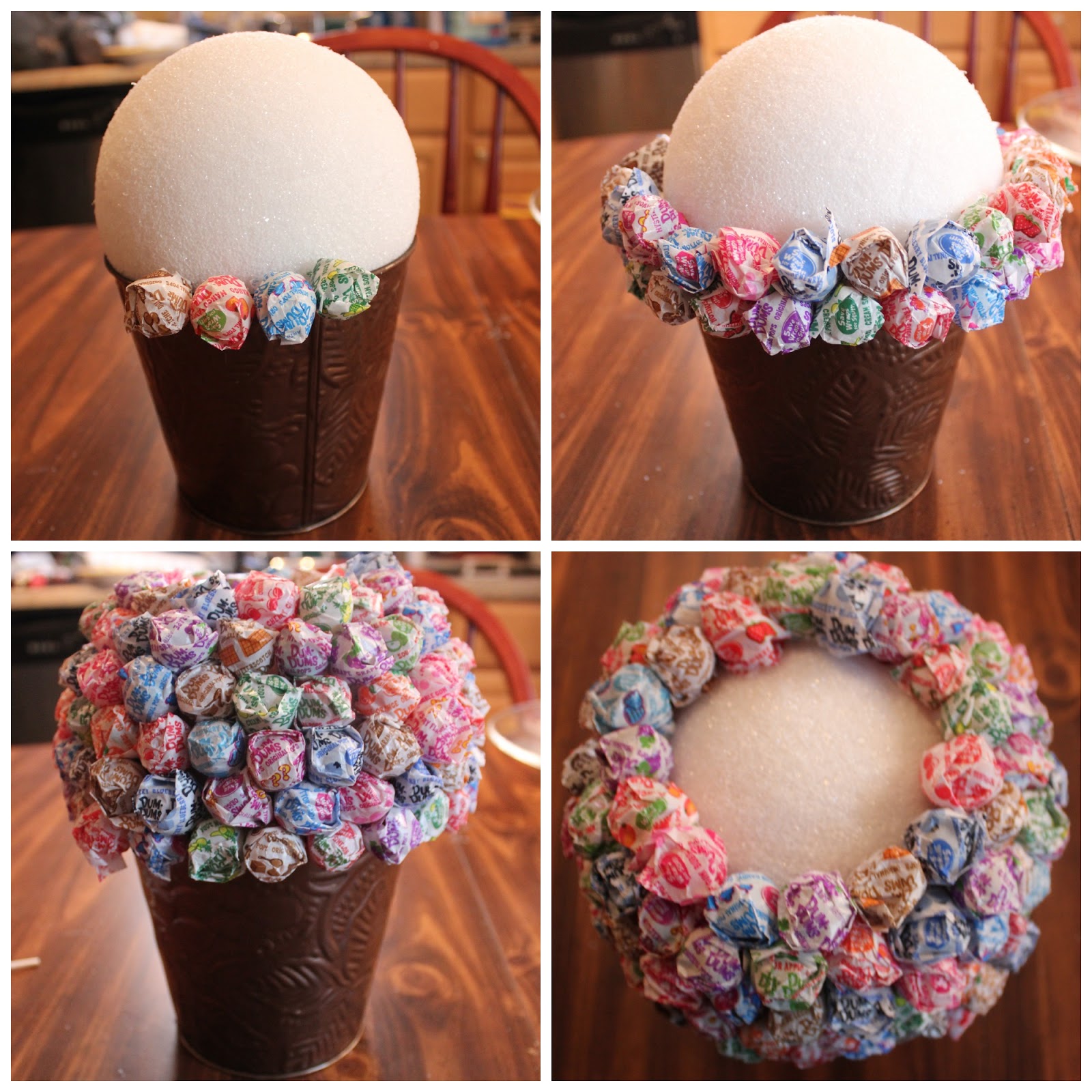... So with that in mind, how does the KOH increase lather/decrease snottiness early in the cure?
It's been almost a year, BG, but I still haven't forgotten your question. Finally, in a fit of inspiration (or insanity) today, here is my answer --
A basic soap molecule looks something like a Tootsie Roll Pop, especially if you look at soap molecules made from straight chain fatty acids (palmitic, lauric, stearic, myristic) rather than fatty acids with bends (oleic, linoleic, linolenic, ricinoleic).
The long stem of the Pop is the fatty acid and the candy sphere stuck onto one end of the stem is a sodium (Na) ion or a potassium (K) ion depending on whether you used NaOH or KOH to make the soap.
Let me talk a bit more about the Sodium version first --
If you stick Tootsie Roll Pops into a styrofoam ball to make a candy centerpiece, the stems point inward to the center. The candy ends face outward touch each other. This is roughly how soap crystals are constructed in a bar of soap -- they pack together so the sodium ions face out toward the watery liquid phase, and the fatty acids point inward toward any superfat or other fat-soluble materials.
Sodium ions are a bit fatter around than their fatty acid stem, but this tidy packing arrangement works pretty well for sodium soap molecules. They are quite happy to form solid-ish balls and plates and hotdogs and stay that way. As we use a bar of soap for bathing, these sodium soap molecules will only reluctantly let go of their neighbors to become fully liquid.
For soap molecules made with straight fatty acids, the jump from solid to liquid is fairly abrupt -- one moment there are soap crystals, and the next there is a watery, sudsy soap solution. To use another analogy, these soap molecules act a bit like bricks in a wall -- the bricks remain firmly together as long as the mortar lasts, but once the mortar fails, the bricks fall easily.
Source:
http://danareneestyle.blogspot.com/2013/04/pinspired-candy-topiaries.html
If you could see sodium soap molecules made with lots of oleic acid or other bendy fatty acids, you would see a similar story, although the resulting "candy centerpiece" in a high-oleic soap is not nearly as tidy. The bends in oleic acid and similar fatty acids prevent the soap molecules from packing together as tidily and tightly as their straight chain cousins.
The solid-ish crystals in a high-oleic soap are not as "waterproof" as crystals in a low-oleic soap. When you wash with bar of high-oleic soap, the water penetrates quickly into the high-oleic crystals, and that causes the crystals to deform and slide past each other. The crystals haven't quite given up being crystals, but they are not able to stay rigidly fixed in place.
This liquid crystal stage is when we see that ropy oleic gel (or snot) we all love to hate. As more and more water is mixed into the soap, the liquid crystals (aka the oleic gel) gradually break down into a watery, sudsy soap solution.
A high-oleic soap is more like a bowl of spaghetti with alfredo sauce. The strands of spaghetti are a tangled ball stuck together with the sauce. When you pick up a bite with a fork, the strands gradually untwine and pull apart.
Potassium soap molecules have the same general shapes as sodium soap molecules, except for one key difference -- the diameter of a potassium ion (the candy at the end of the fatty acid stick) is quite a bit larger than the diameter of a sodium ion, because the electrons of a Potassium ion are not held as tightly by the nucleus (the center) of the ion. Potassium is more like a big, soft marshmallow, and Sodium is more like hard candy.
The bulky Potassium ion prevents the soap molecules from packing as tightly and neatly together. This is true regardless of the fatty acids the Potassium ions are attached to. This interference allows water to penetrate more easily into the crystalline structure, so the soap molecules can more easily dissolve into the wash water.
To go back to my analogies, potassium weakens the mortar of the brick wall (soap molecules made with straight fatty acids) and it makes the pasta (soap molecules with bent fatty acids) more slippery and slithery.
So in summary --
By adding a bit of KOH to a high lard (or palm or tallow) recipe, the fairly insoluble soap molecules created from stearic and palmitic acids will become more soluble in water. You'll get more lather quicker and with less work.
Adding a bit of KOH to a high-oleic soap will make the oleic gel not quite as strong. The gel will "snot" less and dissolve better into the wash water.
edited to clarify my explanation












































